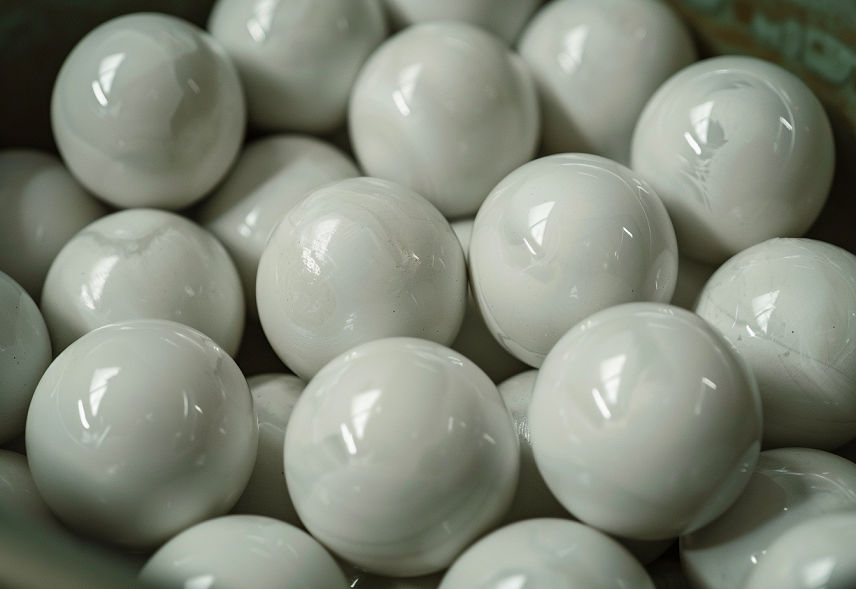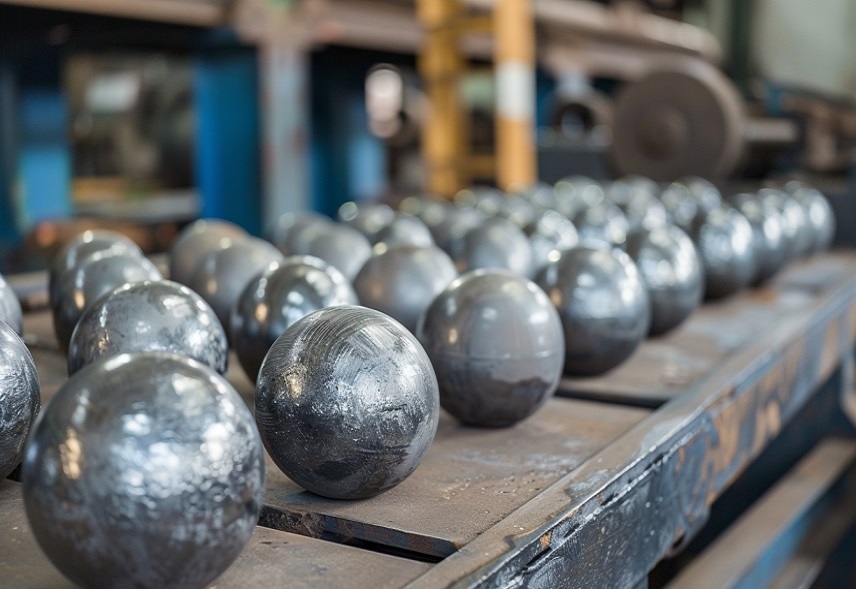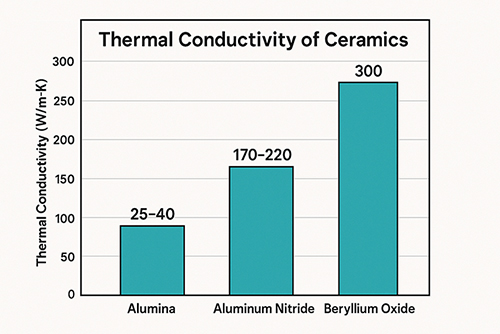Ceramic vs. Steel Grinding Balls: A Comprehensive Comparison for Industrial Use

Introduction
In industrial processes, grinding balls are indispensable components in milling and grinding operations, where they play a pivotal role in reducing particle sizes and refining material textures. These balls, varying in material composition, size, and density, are at the heart of numerous industries, from mining to pharmaceuticals, affecting product quality, efficiency, and operational costs.
Among the materials, ceramic and steel balls stand out for their distinctive properties and applications. Ceramic grinding balls, known for their hardness and durability, offer precision and minimal contamination, making them ideal for high-purity processes. Steel balls, valued for their robustness and cost-effectiveness, excel in heavy-duty milling operations. This article embarks on a comprehensive comparison between these two types of grinding balls, aiming to illuminate their strengths, limitations, and optimal use cases in industrial settings.
Composition and Manufacturing
Grinding balls are pivotal in the milling and grinding processes of various industries, from mining and metallurgy to cement and pharmaceuticals. These balls facilitate the breaking down of solid materials into finer particles by impact and attrition, significantly influencing the efficiency, quality, and cost of production processes. Ceramic and steel grinding balls represent two major categories, each with distinct compositions, manufacturing processes, and properties that make them suitable for different applications. This section introduces these materials, setting the groundwork for a comprehensive comparison of their use in industrial settings.
Ceramic Grinding Balls
Ceramic balls are made from a variety of materials, including silicon nitride, alumina, zirconia, and others, chosen for their hardness, wear resistance, and chemical inertness. The manufacturing process involves high-temperature kiln firing of selected ceramic powders, followed by precision grinding to achieve the desired size and shape. These balls are characterized by their exceptional hardness, low density, and resistance to high temperatures and chemical corrosion, making them ideal for applications requiring minimal contamination and high efficiency in grinding.

Steel Grinding Balls
Steel grinding balls are typically forged or rolled from carbon steel, alloy steel, or stainless steel. The choice of steel type affects the ball's hardness, resilience, and resistance to wear and corrosion. Production methods vary but generally involve heating the steel to a high temperature before shaping it into balls through forging or rolling, followed by heat treatment to achieve the desired mechanical properties. Steel balls are known for their high impact strength, weight, and ability to withstand substantial loads, making them well-suited for heavy-duty grinding operations where abrasiveness and mechanical wear are significant factors.

Performance in Grinding Applications
Efficiency and Effectiveness
Ceramic balls, with their smooth surface and lower density, can accelerate the grinding process by reducing friction and wear on the mill components, leading to faster processing times and lower energy consumption. Their inert nature also minimizes the risk of chemical interactions with the material being ground, ensuring the purity and quality of the final product. In contrast, steel balls, owing to their higher density and impact strength, are more effective in breaking down harder materials, making them indispensable in industries such as mining and cement manufacturing.
Wear Resistance and Durability
Ceramic grinding balls boast exceptional wear resistance, significantly extending their service life and reducing the need for frequent replacements. This durability also means less contamination of the ground materials, a crucial factor in pharmaceuticals and food processing. Steel balls, while durable, tend to wear more quickly in high-impact environments, potentially leading to higher operational costs over time due to more frequent replacements and maintenance.
Impact on Ground Materials
The material composition of grinding balls can influence the purity and characteristics of the ground material. Ceramic balls, being chemically inert, prevent any risk of contamination, which is particularly important in the manufacturing of electronics, pharmaceuticals, and food products. Steel balls, although generally safe, can introduce metallic contamination in certain conditions, especially when grinding acidic or basic materials, which may not be acceptable in some applications.
Operational Considerations
The operational success of grinding processes is heavily influenced by the suitability of the grinding media to the specific conditions and requirements of the operation. This necessitates a careful consideration of the types of grinding operations and the environmental factors that might affect the performance and durability of ceramic and steel grinding balls.
Application Suitability
Ceramic grinding balls are particularly advantageous in high-precision applications requiring minimal contamination, such as in the pharmaceutical, food processing, and semiconductor industries. Their resistance to wear and chemical inertness make them ideal for both dry and wet grinding operations where purity and precision are paramount.
On the other hand, steel grinding balls are better suited for heavy-duty operations involving the grinding of hard materials, such as in mining and cement production. Their superior impact strength and durability make them the preferred choice for both dry grinding, where their robustness can handle the high impact of materials, and wet grinding, where their weight aids in the efficient breakdown of materials.
Environmental Factors
The performance of grinding balls is also affected by environmental conditions such as temperature and humidity. Ceramic balls, with their ability to withstand high temperatures and resist corrosion, maintain their integrity and performance in a wider range of environmental conditions, including high-temperature and corrosive environments. Steel balls, while generally robust, may be more susceptible to corrosion in humid or corrosive environments unless specifically treated or manufactured from corrosion-resistant alloys.
Thus, the selection between ceramic and steel grinding balls should also consider the ambient conditions to ensure optimal performance and longevity of the grinding media.
Economic Factors
Economic considerations play a crucial role in the selection of grinding balls for industrial applications. The decision between ceramic and steel grinding balls involves not only an assessment of their initial purchase price but also an evaluation of their cost-effectiveness over time, factoring in maintenance and replacement needs.
Cost Analysis
Initially, ceramic grinding balls typically present a higher purchase price than steel balls due to the more complex manufacturing processes and the higher cost of raw materials. However, their superior durability and lower wear rate often translate into a lower total cost of ownership over time. Ceramic balls can operate for extended periods without the need for replacement, making them a cost-effective option for processes where minimal contamination and high purity are essential.
Maintenance and Replacement
The maintenance needs for ceramic grinding balls are significantly lower than for steel balls, primarily due to their resistance to wear, corrosion, and thermal changes. This reduces downtime for maintenance and the frequency of ball replacement, contributing to a reduction in long-term operational costs. Steel balls, while initially more affordable, may require more frequent replacements in harsh environments or high-impact applications, leading to increased maintenance costs and potential production delays.
Ultimately, the economic viability of using ceramic versus steel grinding balls depends on a comprehensive analysis that considers the initial investment, the expected lifespan of the balls, maintenance schedules, and the impact of downtime on production efficiency. By carefully weighing these factors, industries can make informed decisions that optimize their grinding operations' cost-effectiveness and operational efficiency.
Here's a comparison table summarizing key aspects of ceramic versus steel grinding balls for industrial use:
| Aspect | Ceramic Grinding Balls | Steel Grinding Balls |
|---|---|---|
| Composition | Silicon nitride, alumina, zirconia | Carbon steel, alloy steel, stainless steel |
| Manufacturing Process | High-temperature kiln firing, precision grinding | Heating, forging or rolling, heat treatment |
| Efficiency and Effectiveness | Higher due to low density and smooth surface; reduces friction and wear | Effective in breaking down harder materials due to higher density and impact strength |
| Wear Resistance and Durability | Exceptional wear resistance; extends service life | Durable but may wear more quickly in high-impact environments |
| Impact on Ground Materials | Chemically inert, prevents contamination; ideal for high-purity applications | Can introduce metallic contamination in certain conditions |
| Application Suitability | High-precision applications (pharmaceuticals, food processing) | Heavy-duty operations (mining, cement production) |
| Environmental Factors | Withstands high temperatures and corrosion; suitable for a wide range of conditions | More susceptible to corrosion unless treated; performance can vary with environmental conditions |
| Cost Analysis | Higher initial cost; superior durability and lower wear rate offer cost-effectiveness over time | Lower initial cost; may incur higher operational costs due to frequent replacements |
| Maintenance and Replacement | Significantly lower; resistant to wear, corrosion, and thermal changes | More frequent replacements needed in harsh environments or high-impact applications |
Case Studies and Industry Applications
In the realm of industrial grinding and milling, the choice between ceramic and steel balls is often dictated by the specific demands of the application and the material being processed.
Ceramic Balls
In the pharmaceutical industry, ceramic balls are preferred for grinding active pharmaceutical ingredients due to their inertness, ensuring no contamination and maintaining the purity of the compounds. Similarly, in the electronics industry, the manufacturing of semiconductors utilizes ceramic balls for the fine grinding of silicon wafers, where even microscopic impurities can compromise the functionality of the semiconductor devices.
Steel Balls
Conversely, the mining sector heavily relies on steel grinding balls for the processing of ores. The robustness and superior impact strength of steel balls make them ideal for breaking down hard materials like metals and minerals. In cement manufacturing, steel balls are used in large quantities for the grinding of clinker into fine powder, where their durability and cost-effectiveness are highly valued.
Conclusion
In comparing ceramic and steel grinding balls, each material exhibits distinct advantages tailored to specific industrial needs. Ceramic balls excel in high-precision, purity-critical applications such as pharmaceuticals and electronics, offering durability and minimal contamination. Steel balls, favored for their robustness and cost-effectiveness, are indispensable in heavy-duty tasks like mining and cement manufacturing.
The choice between ceramic and steel should thus be guided by the specific demands of the grinding operation, including material properties, operational environment, and economic considerations. Ultimately, understanding these factors ensures the selection of the most appropriate grinding ball, optimizing performance, longevity, and cost-efficiency in industrial milling and grinding processes.
Advanced Ceramic Materials (ACM), a leading ceramic supplier, plays a pivotal role in providing high-quality grinding balls that meet the diverse needs of these applications. By leveraging the insights provided and partnering with suppliers like ACM, industry professionals can ensure their grinding operations are not only effective but also cost-efficient and aligned with their specific requirements.
{{item.content}}
LEVE A REPLY
{{item.children[0].content}}
{{item.content}}
LEAVE A REPLY
SUBSCRIBE OUR NEWSLETTER
- Boron Nitride in Cosmetics: Enhancing Performance and Sensory Appeal
- Maximize MOCVD Yield and Purity with Hexagonal Boron Nitride Setters
- What Are the Advantages and Uses of Boron Nitride Ceramic Sheet?
- The Compression Annealing Advantage for Pyrolytic Boron Nitride
- Beyond Insulation: The Surprising Spectrum of Ceramic Thermal Conductivity











